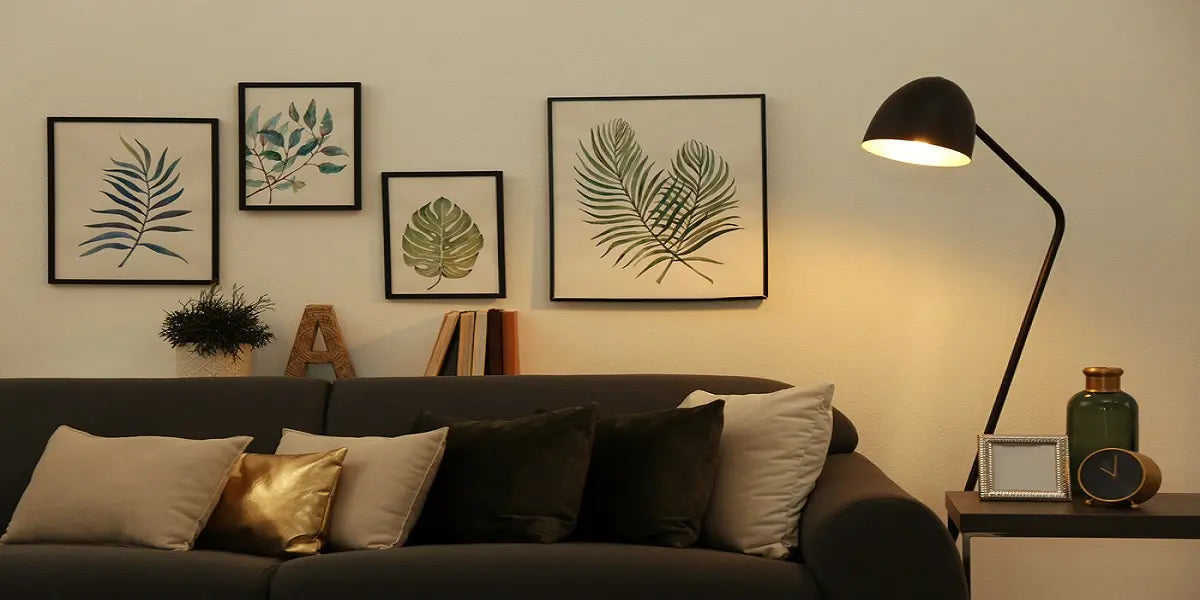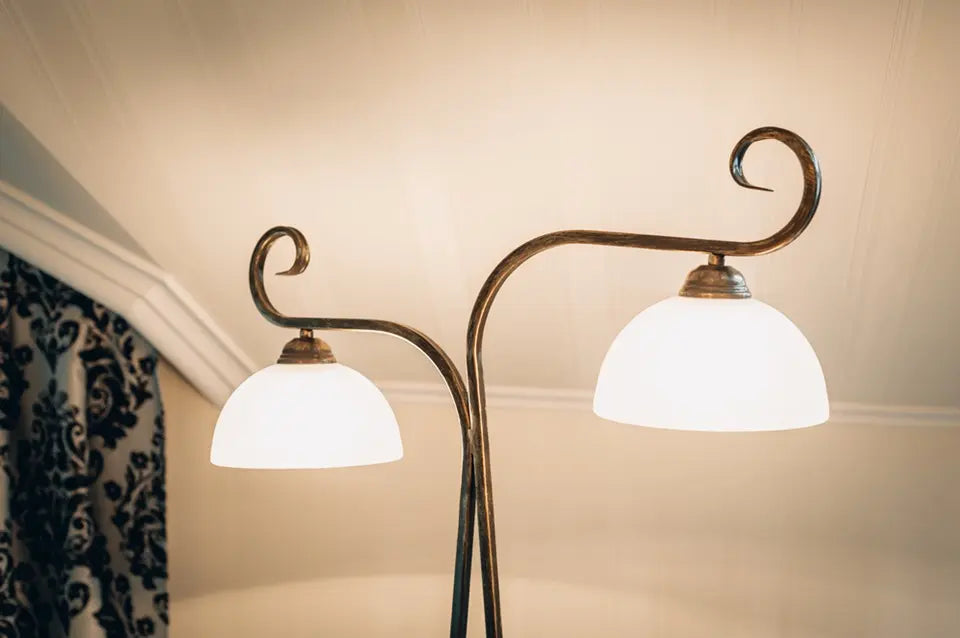Living Room Floor Lamp Placement Guide
You're not alone if you're struggling to find the best spot for your floor lamp. 73% of homeowners move their floor lamps several times before finding the perfect placement.
This article covers everything you need to know: Height & Distance FAQs, Step-by-Step Reading Nook Setup, Layered Lighting Comparison, Pro-Level Strategies, Common Mistakes to Avoid, and Expert Insights.
1. Height & Distance FAQs
| Question | Recommendation |
|---|---|
| What is the optimal total lamp height? | 58–64 inches (147–163 cm). Shade bottom aligns with seated eye level. |
| Where should the shade bottom sit? | 10–12 inches (25–30 cm) above seat height to prevent glare. |
| How far from the sofa or chair? | 2–3 feet (60–90 cm) for comfortable reach and focused light. |
| How do you measure? | Measure seat height → add 10–12 inches → choose a lamp matching that shade-bottom height. |
2. Step-by-Step: Create a Cozy Reading Nook
- Step 1: Choose the Spot – Near a window or in a corner with natural light.
- Step 2: Pick Your Lamp – Gooseneck or adjustable-arm lamp (task lighting), 3000K warm light, at least 500 lumens.
- Step 3: Place Precisely – Shade bottom at eye level, 2–3 feet away from the chair.
- Step 4: Layer the Light – Combine ambient overhead fixtures and accent spotlights for depth.
- Step 5: Enhance Comfort – Add a side table, cozy rug, and greenery.
3. Ambient vs. Task vs. Accent Lighting
| Type | Purpose | Example Lamp | Placement |
|---|---|---|---|
| Ambient | General fill light | Torchiere / column lamp | Corners, behind the sofa |
| Task | Focused work or reading | Gooseneck / adjustable-arm lamp | Next to sofa or reading chair |
| Accent | Highlight art or décor | Pin light / directional spotlight | Art walls, display corners |
4. Pro-Level Placement Strategies
Feng Shui Floor Lamp Wisdom
In feng shui, light activates positive energy (Chi). Place your floor lamp in the wealth corner (far left from entrance) or fame area (back center) for optimal flow. Avoid pointing lamps directly at doorways to prevent energy blockages.
Smart Floor Lamp Revolution
Modern smart floor lamps transform your space. Adjust RGB modes, dimming, and color temperature to suit any mood: movie night (warm dim), reading (bright cool), party (dynamic colors).
5. Common Mistakes to Avoid
- Blocking views (TV or windows).
- Creating glare on screens.
- Choosing the wrong scale: too big or too small.
- Relying solely on one light source.
- Poor cord management.
- Style clashes with décor.
6. Next Steps
You now have a complete blueprint. Start with one strategic placement and expand. Experiment and adjust until it feels just right.
7. FAQs
| FAQ | Answer |
|---|---|
| How many floor lamps should I buy? | 1–2 for standard rooms; larger or open plans can handle 3+ to define zones. |
| What lamp produces the most light? | Torchiere (uplight) models bounce light off the ceiling for maximum fill; use arc lamps for focused tasks. |
| Can floor lamps serve as main sources of light? | Combine them with overhead and table lamps to create effective layered lighting. |
| How tall should the lamp next to a couch be? | Shade bottom at seated shoulder height—approximately 58–64 inches total height. |
8. Continue Reading
Best Places to Install a Floor Lamp
Ultimate Guide to Table Lamp Placement
Arc Lamp Positioning: 8 Best Spots
Best Floor Lamp Spots for Bedroom
Ready to Shop?
Browse our collection of floor lamps to elevate your living space today!









Leave a comment
All comments are moderated before being published.
This site is protected by hCaptcha and the hCaptcha Privacy Policy and Terms of Service apply.